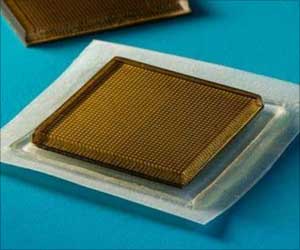The stickers maintained a strong adhesion and captured changes in underlying organs as volunteers performed various activities, including sitting, standing, jogging, and biking.
Currently, ultrasound imaging requires bulky and specialized equipment available only in hospitals and doctor’s offices. But the new design, detailed in the journal Science, might make the technology as wearable and accessible as buying Band-Aids at the pharmacy.
Advertisement
“We envision a few patches adhered to different locations on the body, and the patches would communicate with your cell phone, where AI algorithms would analyze the images on demand,” said Xuanhe Zhao, Professor of mechanical engineering and civil and environmental engineering at MIT.
“We believe we’ve opened a new era of wearable imaging: With a few patches on your body, you could see your internal organs.”
Further, the new ultrasound sticker produces higher resolution images over a longer duration by pairing a stretchy adhesive layer with a rigid array of transducers.
The device’s adhesive layer is made from two thin layers of elastomer that encapsulate a middle layer of solid hydrogel, a mostly water-based material that easily transmits sound waves.
The bottom elastomer layer is designed to stick to skin, while the top layer adheres to a rigid array of transducers that the team also designed and fabricated. The entire ultrasound sticker measures about 2 square centimeters across, and 3 millimeters thick — about the area of a postage stamp.
From the stickers’ images, the team was able to observe the changing diameter of major blood vessels when seated versus standing. The stickers also captured details of deeper organs, such as how the heart changes shape as it exerts during exercise.
The researchers were also able to watch the stomach distend, then shrink back as volunteers drank, then later passed juice out of their system. And as some volunteers lifted weights, the team could detect bright patterns in underlying muscles, signaling temporary microdamage.
The team is working to make the stickers function wirelessly. They are also developing software algorithms based on artificial intelligence that can better interpret and diagnose the stickers’ images.
“We imagine we could have a box of stickers, each designed to image a different location of the body,” Zhao said. “We believe this represents a breakthrough in wearable devices and medical imaging.”
Source: IANS



